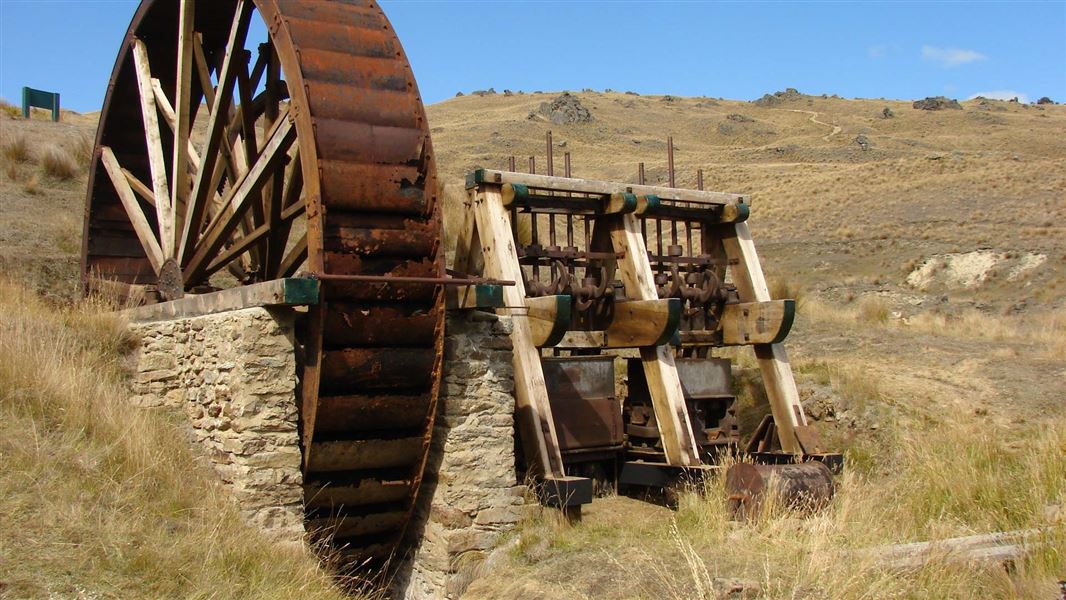
Located in the Otago region
Introduction
Serpentine is a spectacular and well-preserved mining area on the Rough Ridge mountains. Good 4WD conditions are necessary or it's an all-day walk or mountain bike ride.This significant and isolated scenic reserve has a feeling of remoteness. It shows many of the gold extraction technologies of the 19th century: a stamper battery, water wheel and church.
It became known as the Serpentine, after the winding path of nearby Waimonga Creek.